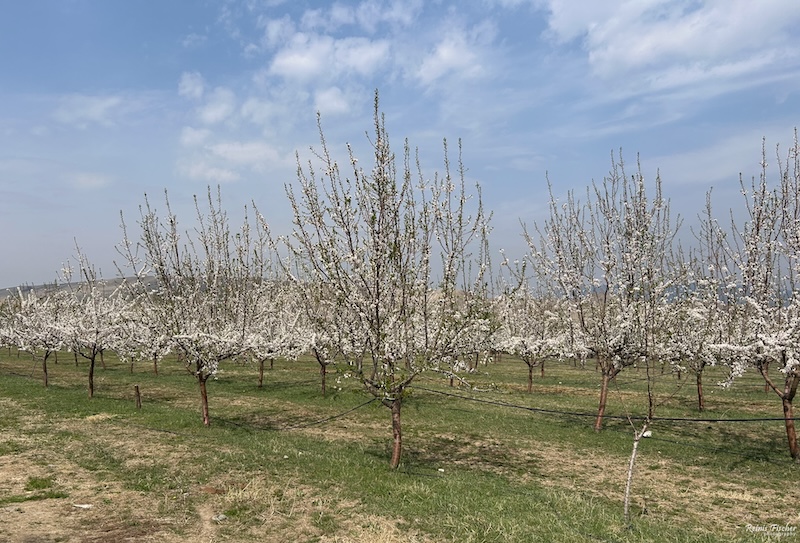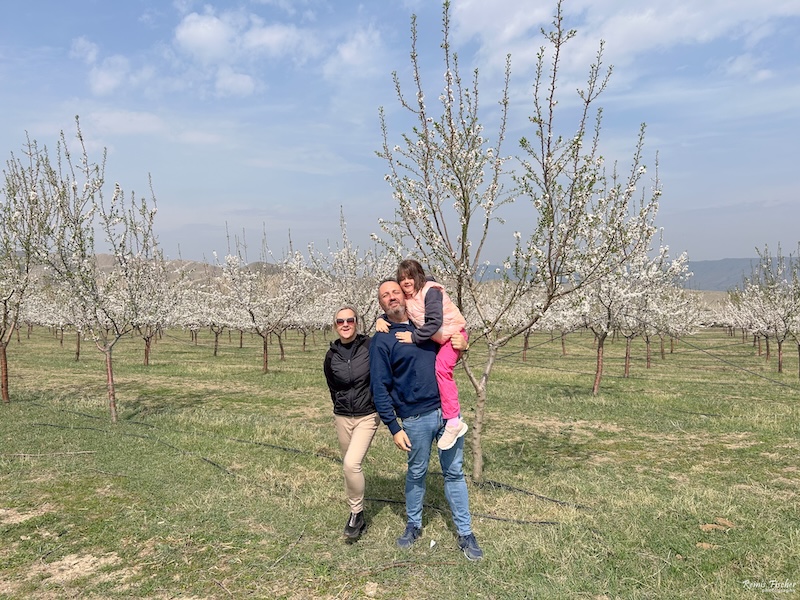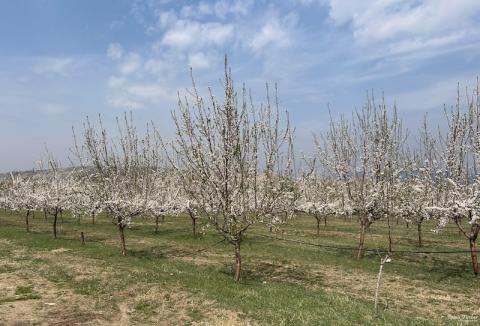As an expat who has called Georgia home for over a decade, I’ve had the privilege of witnessing the country’s agricultural landscape evolve in fascinating ways. From fish farms to cow farms and the aromatic allure of lavender oil fields, Georgia’s farmland investments have always piqued my curiosity.
But in recent years, one trend has stood out above the rest: the growing interest in nut farms, particularly almonds. This shift has turned heads, and after a recent encounter at an almond farm near Kavitskhevi, I’m convinced there’s untapped potential here worth exploring.
During a spring road trip to Kavitskhevi resort, not far from Tbilisi, we pulled over to capture the season’s bloom—almond trees awash in delicate pink and white flowers.
The farm, I later learned, spans an impressive 580 hectares. While snapping photos, I struck up a conversation with a guard who proudly shared that this operation grows almonds primarily for medicinal purposes.

Intrigued, I dug deeper after the trip and discovered that a single hectare of almond trees can yield between 2 to 3 tons of almonds under optimal conditions. That’s a figure that sparks the imagination of any prospective investor.
Georgia’s Almond Boom: A Growing Sector
Georgia’s nut industry, including almonds and walnuts, has been gaining momentum. According to Tornike Lataria, director of the Association of Almond and Walnut Producers, the country harvested around 2,000 tons of almonds in 2023 alone, with production steadily rising. This growth isn’t just a local phenomenon—it’s positioning Georgia as an emerging player in the global almond market.
While California dominates with over 80% of the world’s supply (approximately 2 million tons annually), and Spain follows as the second-largest producer, Georgia is carving out a niche, especially in organic and specialty almonds. Experts like Ashish Kapur, a foreign investor in Georgia’s almond sector, have even dubbed it “the new California of global almond production,” citing its fertile soil and favorable climate.
Globally, almond production reached about 2.5 million tons in 2023, with the U.S., Spain, Australia, and the EU leading the pack. Georgia’s current output places it far behind these giants, but its rapid expansion—projected to increase 16-fold by 2027 to 14,000 tons—suggests it could soon rank among the top 20 producers if trends continue. For context, countries like Portugal and Tunisia produce 10,000–15,000 tons annually, a benchmark Georgia is poised to approach.
Crunching the Numbers: Yield and Revenue Potential
Let’s break down the numbers based on my Kavitskhevi encounter. If one hectare yields 2–3 tons of almonds, the 580-hectare farm could produce between 1,160 and 1,740 tons annually at full capacity. Almond prices vary widely depending on quality and market—ranging from $2,000 to $4,000 per ton for in-shell almonds globally. Assuming a conservative average of $3,000 per ton, that’s a potential revenue of $3.48 million to $5.22 million per year for the farm. For a smaller operation, say 10 hectares, you’re looking at 20–30 tons, or $60,000 to $90,000 annually—before costs, of course, but a compelling starting point.
Costs include land, trees, irrigation, labor, and equipment. In Georgia, agricultural land in regions like Kakheti can range from $1,500 to $5,000 per hectare, depending on location and water access. Almond trees take 3–5 years to bear fruit, with peak production around year 10, so patience is key. Annual operating costs per hectare (water, fertilizer, labor) might hover around $1,000–$2,000, based on regional estimates.
Why Almonds in Georgia?
Georgia’s appeal lies in its unique advantages. The Kakheti region’s dry climate, tempered by rivers like the Iori, mimics the Mediterranean conditions almonds crave—hot summers, mild winters, and well-drained soil. Add to that lower land and labor costs compared to California or Spain, and you’ve got a recipe for profitability. The guard’s mention of medicinal almonds hints at a niche market—think almond oil or extracts for pharmaceuticals—which could fetch premium prices. Plus, Georgia’s proximity to Europe, Turkey, and Asia offers export potential, bolstered by duty-free EU access.
Minimum Investment and How to Start
For a small-scale entry, a 5-hectare almond farm is a realistic starting point. Here’s a rough breakdown:
- Land Purchase: $7,500–$25,000 (at $1,500–$5,000/hectare)
- Trees: $10–$15 per tree, with 100–150 trees per hectare = $5,000–$11,250
- Irrigation Setup: $5,000–$10,000 (drip systems are common)
- Initial Costs (fertilizer, labor, etc.): $5,000–$10,000
- Total Minimum Investment: $22,500–$56,250
Steps to get started:
- Research and Location: Scout regions like Kakheti or Shida Kartli for suitable land with water access. Consult local agricultural experts or the Georgian Almond and Walnut Producers Association.
- Land Acquisition: Work with a local real estate agent familiar with farmland. Foreigners can buy under investment preconditions per Georgia’s 2019 law.
- Planning: Choose hardy almond varieties (e.g., Lauranne or Ferragnes) and a rootstock suited to local soil (e.g., peach-almond hybrids). Plan irrigation—solar-powered pumps could cut costs.
- Planting and Patience: Plant in late fall or early spring. Expect 3–5 years before your first harvest, with breakeven possible by year 5–7.
- Partnerships: Consider crowdfunding platforms or partnering with experienced growers to offset costs and risks.
Final Thoughts
Living in Georgia has taught me that opportunity often hides in plain sight. The almond farm near Kavitskhevi was a reminder of that—a quiet giant in a country brimming with agricultural promise.

Georgia’s almond sector offers a blend of affordability, growth potential, and a chance to tap into a global market. It’s not without risks—water access, market fluctuations, and time—but for those willing to plant the seeds, the harvest could be bountiful.





